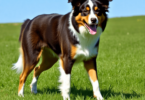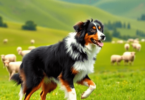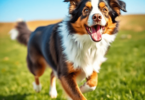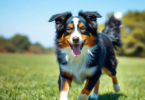The History of Australian Kelpies: From Working Dogs to Modern Companions
The Australian Kelpie is not just a dog; it’s a cultural icon deeply woven into the fabric of Australian pastoral life. Originating in the late 19th century, this remarkable breed was developed as a sheepdog, excelling in herding livestock across vast, challenging terrains.
Key highlights of the Australian Kelpie history include:
- Origins: Bred from various working collies, particularly the Scottish smooth collie, Kelpies were crafted for performance and agility.
- Cultural Significance: These dogs embody the spirit of Australia’s agricultural heritage, known for their intelligence and hard-working nature.
Understanding the origins of the Kelpie breed is essential for appreciating its unique traits. As you dive deeper into this ultimate guide for 2024, you will uncover:
- The early influences that shaped Kelpies
- Notable figures in their breeding history
- Differences between working and show types
- Training tips for these exceptional companions
Get ready to explore the fascinating story behind one of Australia’s most beloved breeds!
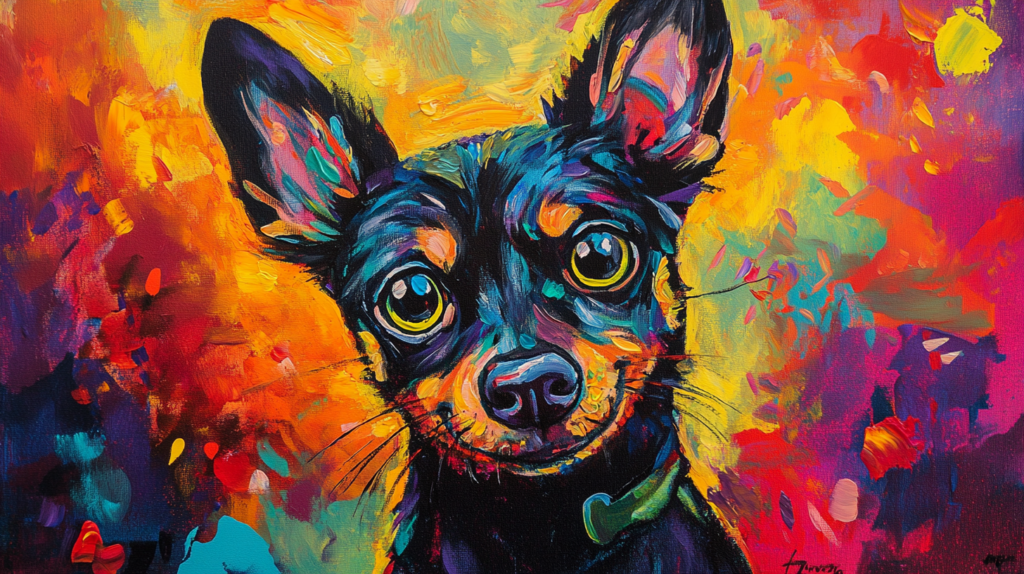
Early Origins of the Australian Kelpie
The Australian Kelpie has an interesting history that goes back to the late 1800s. Its roots are closely connected to the Scottish smooth collie, which had a significant impact on its development. These collies were highly regarded for their herding skills and ability to adapt in challenging situations, qualities that would become crucial in shaping the Kelpie’s personality.
The Role of Early Landholders
Early Australian landowners played a crucial role in nurturing the working Kelpie heritage. They needed dogs that could handle large groups of sheep in dry areas, so they selectively bred dogs that were smart, had great endurance, and strong herding instincts. These pioneers understood the importance of having dogs that could perform well under pressure and navigate unpredictable landscapes while staying calm.
Key Figures in Breeding
Several key individuals were instrumental in establishing the Kelpie breed origin:
- J.D. Gleeson: He is credited with recognizing and promoting Kelpies as a distinct breed. His efforts brought attention to their unique qualities and capabilities.
- William Allen: A grazier from Geralda Station, he imported working collies that became foundational to the Rutherford Kelpie bloodline. His contributions helped create a more refined working dog tailored for Australian conditions.
- Other early breeders: Their commitment to developing a reliable working dog led to the establishment of breeding standards that emphasized performance over appearance.
Through these combined efforts, the Australian Kelpie evolved into a breed celebrated for its exceptional herding ability and adaptability, laying the groundwork for its prominent role in Australian agriculture and culture today. Understanding this rich history provides valuable insights into the unique traits that define Kelpies as both working dogs and beloved companions.
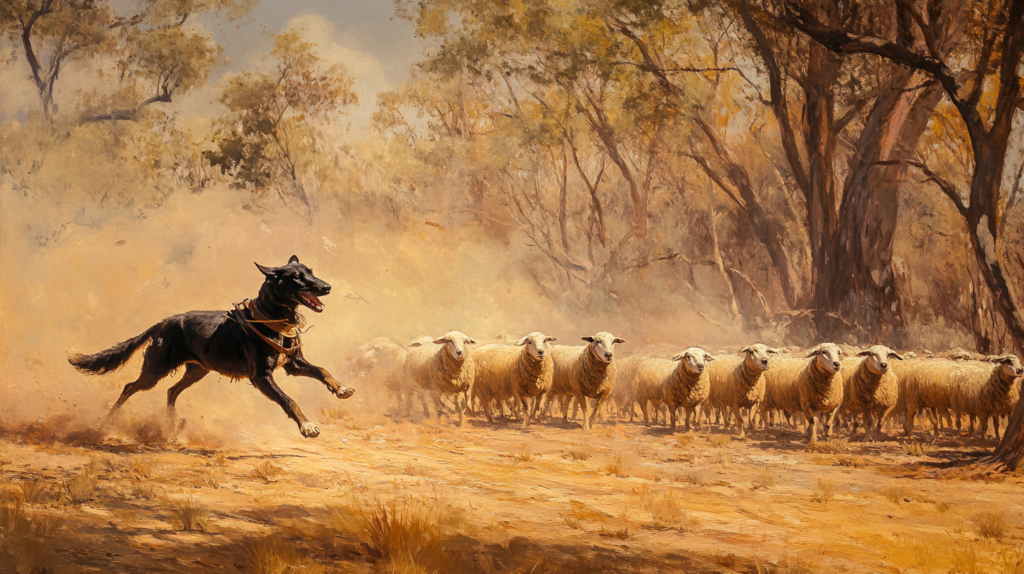
The First Notable Kelpies
The journey into the world of Australian Kelpies takes a significant turn with J.D. Gleeson, a pivotal figure in the history of dog breeding in Australia. In the late 19th century, he set his sights on recognizing and promoting a distinct breed that would soon capture the hearts of farmers and dog enthusiasts alike.
Meet King’s Kelpie
Among Gleeson’s most notable achievements was the identification of the first Australian Kelpie, affectionately known as King’s Kelpie. This black and tan female, named after the Celtic water spirit, showcased exceptional herding capabilities that wowed many at sheepdog trials. Her remarkable performance not only highlighted the breed’s potential but also cemented its place in Australian agricultural life.
Significance of J.D. Gleeson’s Work
Gleeson’s efforts were instrumental in establishing Kelpies as a separate breed within Australia. His commitment to breeding practices helped shape the standards that would define this agile and intelligent dog. By advocating for Kelpies’ unique traits, he paved the way for recognition at events like the Royal Melbourne Show, where they would eventually shine.
Through his visionary work, J.D. Gleeson placed Kelpies firmly on the map, transforming them from mere working dogs into celebrated icons of Australian culture. Understanding this critical chapter—King’s Kelpie history—provides a deeper appreciation for where these marvelous dogs came from and their lasting impact on farming communities across the continent.
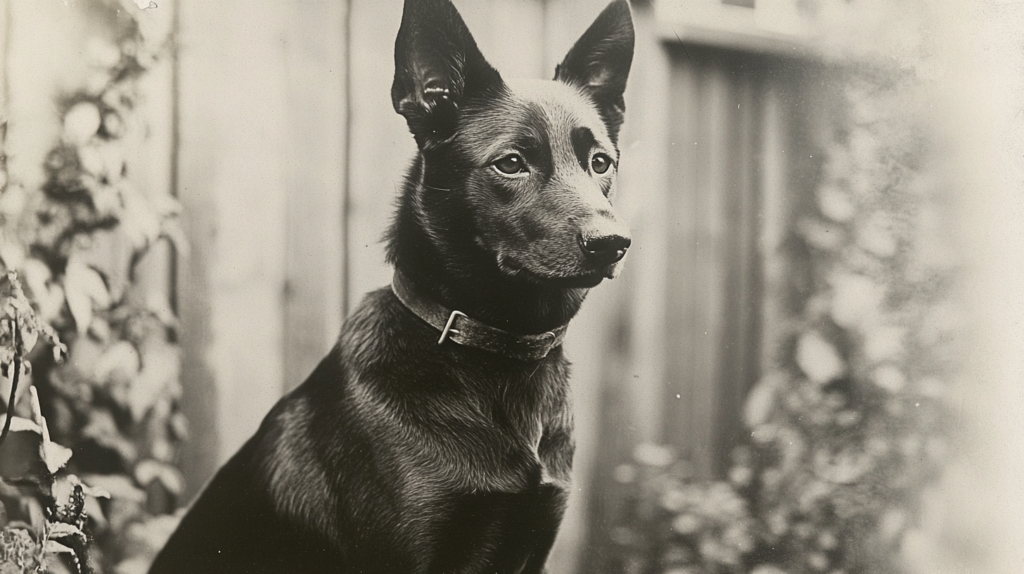
Development and Recognition of the Breed
The journey from early working collies to the modern Australian Kelpie is a fascinating chapter in Australian sheepdog history. This evolution emphasized not only herding ability but also versatility, which made Kelpies indispensable on farms. These dogs were bred to handle vast terrains, exhibiting a remarkable instinct for mustering livestock under challenging conditions.
As the breed gained popularity, the need for official standards became clear. The Australian National Kennel Council (ANKC) stepped in, establishing guidelines that outlined ideal physical traits and temperament. This move was crucial in maintaining the breed’s integrity and ensuring that future generations of Kelpies exhibited their signature qualities.
Recognition of Kelpies in formal settings marked a significant milestone. The Royal Melbourne Show became one of the first prestigious dog shows to feature Kelpies, showcasing their skills and beauty. Such events provided a platform for breeders to demonstrate their exceptional dogs, solidifying Kelpies’ status as both working companions and show contenders.
Key aspects of breed development included:
- Focus on Herding Ability: Early breeders prioritized herding instincts over appearance, resulting in dogs proficient at managing sheep and cattle.
- Versatility: Kelpies adapted well to various tasks on farms, from mustering to guarding livestock.
- Breed Standards: The ANKC’s establishment of clear standards ensured consistency among breeders, helping preserve the unique characteristics of Kelpies.
The recognition within dog shows not only celebrated their working prowess but also highlighted their appeal as companions. As Kelpies transitioned into both working roles and family pets, they captured hearts across Australia and beyond.
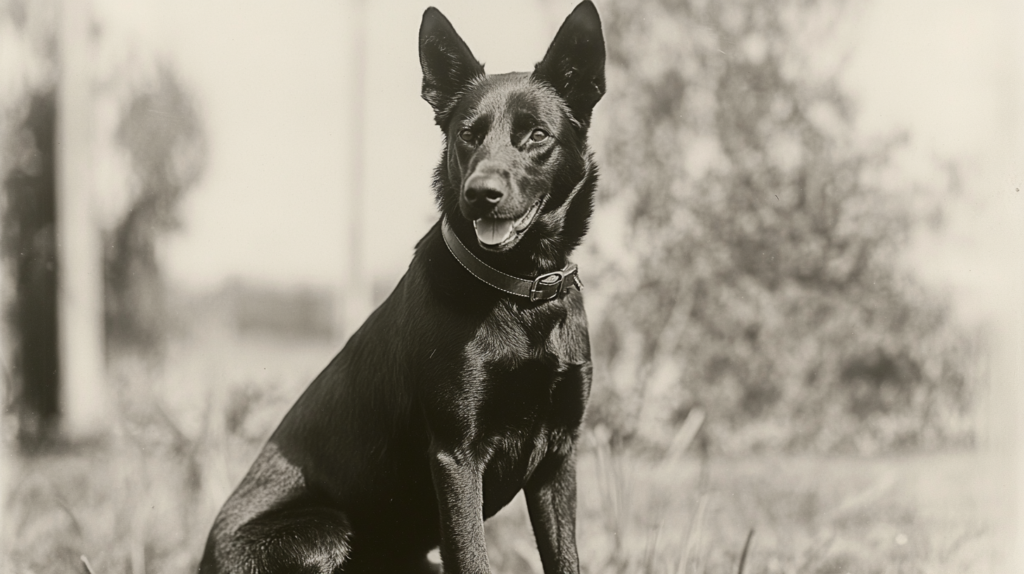
Working vs Show Kelpies: A Tale of Two Types
The Australian Kelpie comes in two distinct types: Working Kelpies and Show Kelpies. These variations stem from different breeding focuses, affecting their physical traits and roles in various activities.
Differences in Purpose
1. Working Kelpies
Bred primarily for herding livestock, these dogs exhibit exceptional stamina, agility, and intelligence. Their working ability is paramount, with a strong instinct to control and mustering sheep, cattle, and other animals over vast terrains.
2. Show Kelpies
Developed with an emphasis on appearance, Show Kelpies participate in conformation events where they are judged based on breed standards. While their herding instincts remain present, their physical traits may have been prioritized over pure working ability.
Influence of Border Collie Ancestry
The influence of Border Collies has played a significant role in shaping the modern Show Kelpie’s characteristics. Some notable differences include:
- Coat Type and Structure: Show Kelpies often exhibit variations in coat type influenced by Border Collie genetics. This can result in smoother or fluffier coats compared to their Working counterparts. Color patterns can also vary more widely among Show Kelpies, enhancing their visual appeal in dog shows.
- Physical Build: Show Kelpies tend to possess a more refined structure that aligns with conformation standards, which may differ from the robust build of Working Kelpies designed for endurance and function.
While both types share a common ancestry rooted deeply in the Australian landscape, their paths diverged based on human preferences for utility versus aesthetics. Understanding these distinctions enriches the appreciation for each type’s unique contributions to both herding tasks and competitive events.
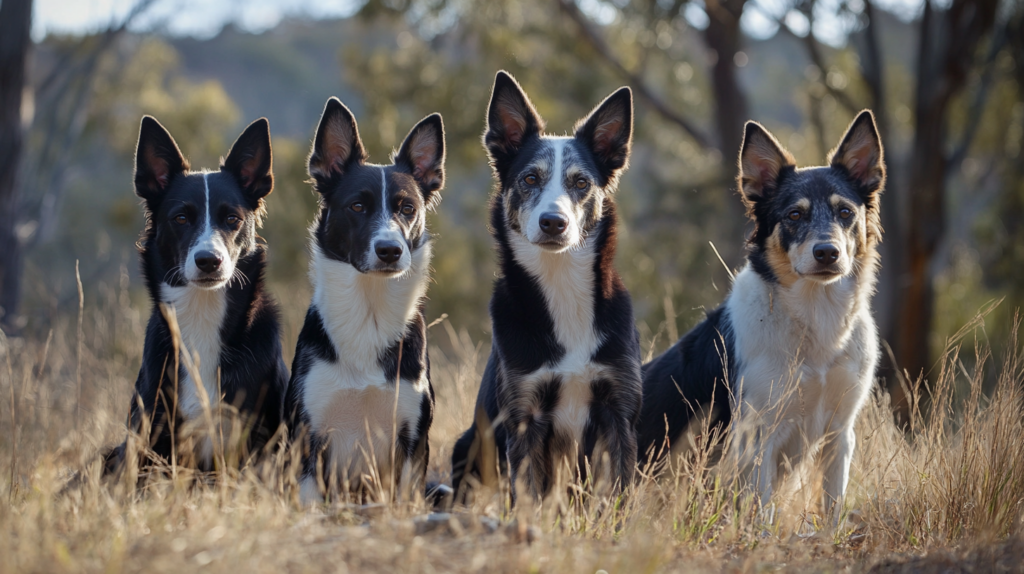
Ancestry and Genetic Background of Australian Kelpies
The ancestry of the Australian Kelpie has been a topic of interest for dog lovers and breeders. There’s a common belief that dingoes played a role in shaping this breed. However, recent research has proven otherwise, showing that Kelpies are not directly related to dingoes. This misunderstanding probably comes from the fact that both Kelpies and dingoes can adapt well to tough Australian landscapes.
Insights from Genomic Studies
Genomic studies have shed light on the true ancestry of Kelpies. Scientists have found that their lineage mainly comes from different types of working collies, especially the Scottish smooth collies brought to Australia by early landowners. These collies were highly valued for their herding skills and temperament—qualities that Kelpies have inherited and improved upon over time.
Key points regarding the genetic background include:
- No Dingo Connection: Research confirms that Kelpies are distinct from dingoes, focusing instead on their collie heritage.
- Collie Influences: Early breeding practices emphasized herding skills and adaptability, shaping the Kelpie into an exceptional working dog.
- Genomic Findings: Advanced studies reveal a clearer picture of Kelpies’ lineage, emphasizing their connection to imported working collies rather than indigenous canines.
Understanding these aspects of Kelpie ancestry enriches our appreciation for this versatile breed. As discussions about their heritage continue, it remains clear that Kelpies owe their remarkable abilities to dedicated breeding practices rather than mythologized origins.
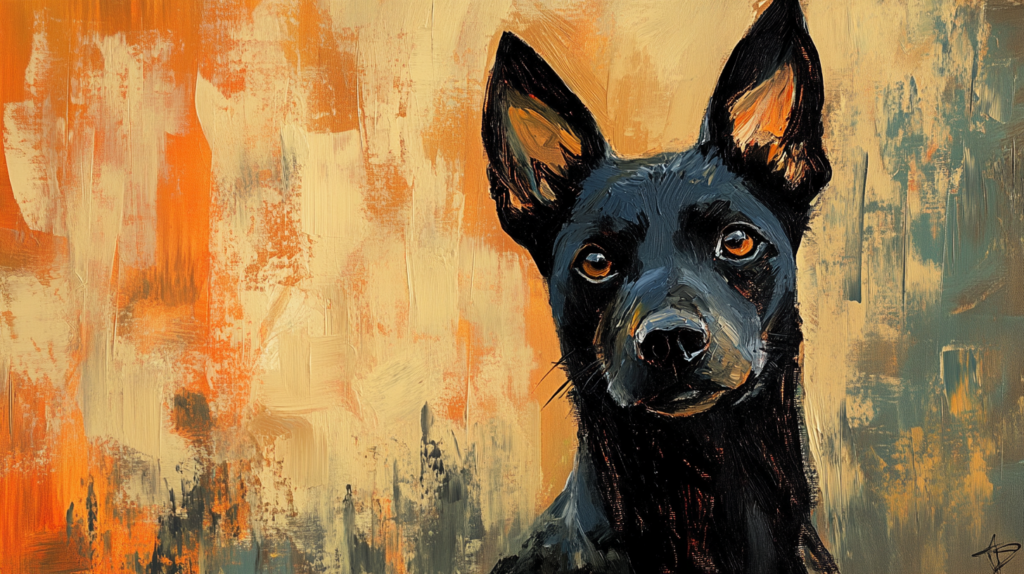
Physical Characteristics and Working Ability
The Australian Kelpie is a remarkable breed, boasting a range of sheepdog characteristics that make them stand out in the working dog arena. Here’s a closer look at their physical traits:
Size
Kelpies are medium-sized dogs, typically weighing between 30 to 50 pounds. Their height can vary, ranging from 17 to 22 inches at the shoulder.
Coat Colors
The breed showcases a stunning array of coat colors, including:
- Black
- Tan
- Red
- Cream
- Chocolate
Kelpies possess a double coat, which helps them thrive in various climates, ensuring comfort whether they’re herding sheep under the hot Australian sun or braving chilly nights.
Their intelligence is one of their most defining features. Kelpies are known for their exceptional problem-solving skills and natural herding instincts. This intelligence translates into:
- Quick Learning: They grasp commands swiftly, making training an enjoyable experience for both dog and owner.
- Instinctive Behavior: With an innate ability to herd livestock, Kelpies often require minimal guidance when working on farms.
These traits enable them to excel not only in herding but also in various canine sports. Their agility and stamina ensure they can cover vast areas efficiently while maintaining focus.
The combination of physical prowess and sharp intellect solidifies the Australian Kelpie’s reputation as one of Australia’s most beloved working dogs.
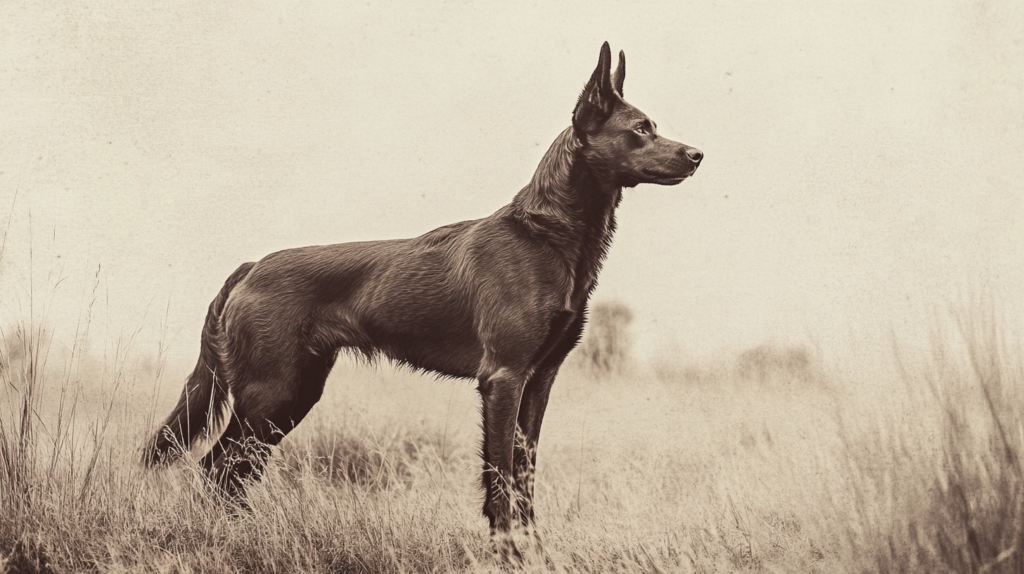
Famous Working Dogs: Legendary Kelpies Who Made History
The Australian Kelpie breed has a rich history of legendary dogs that have greatly influenced herding practices. Two notable figures in this canine history are Moss and Brutus, both of whom demonstrated the incredible abilities of Kelpies.
1. Moss: The Champion Trial Dog
Moss, a champion trial dog, became widely recognized in the world of sheepdog trials. This exceptional Kelpie was known for his remarkable accuracy and speed, allowing him to navigate difficult landscapes with ease. His success at national competitions not only showcased the breed’s outstanding herding abilities but also motivated many aspiring handlers to embrace the art of sheepdog trials.
2. Brutus: The Game Changer in Herding
Brutus, known for his extraordinary herding skills, played a crucial role in improving herding techniques in Australia. His sharp instincts and commanding presence made him a powerful force on the farm, effortlessly managing flocks even in challenging situations. Brutus’ impact went beyond mere performance; he raised the bar for what working Kelpies could accomplish.
These famous Australian Kelpies from history exemplify the breed’s adaptability and intelligence. Their achievements reflect not only their own talents but also the commitment of their handlers who recognized and nurtured their natural abilities. The legacy of Moss and Brutus continues to inspire current generations of Kelpie enthusiasts, reinforcing the breed’s reputation as one of Australia’s finest working dogs.
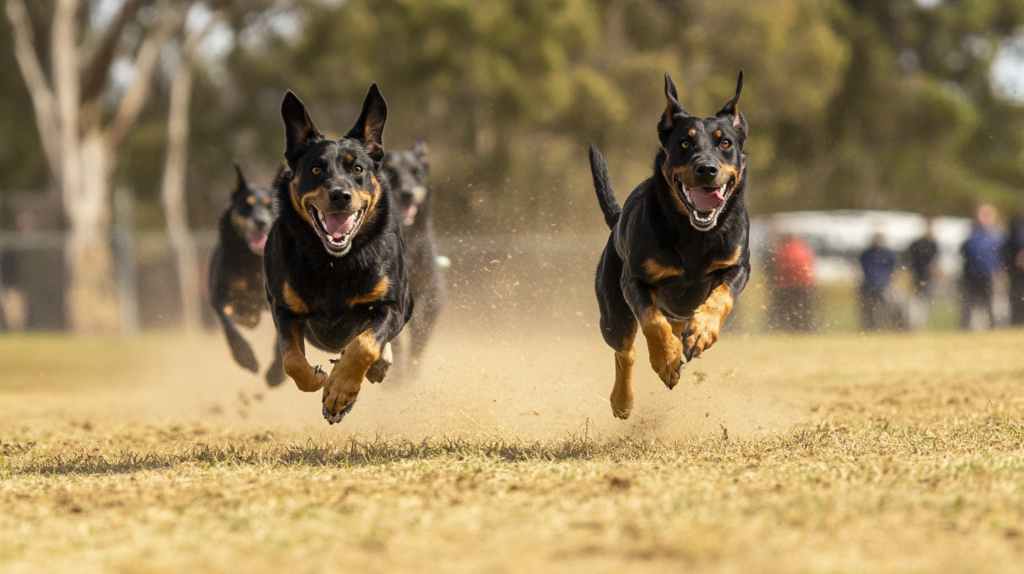
Training Techniques for Success: Raising Well-rounded Australian Kelpies
Raising an Australian Kelpie can be a delightful adventure, especially when you understand the significance of training. Training Kelpies effectively revolves around two crucial components:
1. Early Socialization
Introducing your Kelpie to various people, environments, and other animals during their formative weeks helps them become well-adjusted adults. This exposure minimizes behavioral issues and promotes confidence.
2. Consistent Training Methods
Tailoring your training approach to suit your individual dog’s needs is essential. Kelpies are intelligent and eager to learn, but they thrive on structure and routine. Employing positive reinforcement techniques—like treats and praise—can be especially effective in motivating your furry friend.
Here are some recommended resources to enhance your training journey:
Books
- “The Art of Raising a Puppy” by The Monks of New Skete: A fantastic guide that covers foundational training principles.
- “How to Train Your Dog” by Barbara Woodhouse: Timeless tips that can apply to any breed, including Kelpies.
Online Courses
- K9 Training Institute: Offers a range of courses specifically designed for herding breeds.
- Udemy’s Dog Training Classes: Various instructors provide insights tailored for different skill levels.
Investing time in proper training not only benefits your Kelpie’s behavior but also strengthens the bond between you. With dedication and plenty of fun, you’ll be well on your way to raising a happy, well-rounded Australian Kelpie ready to tackle any challenge!
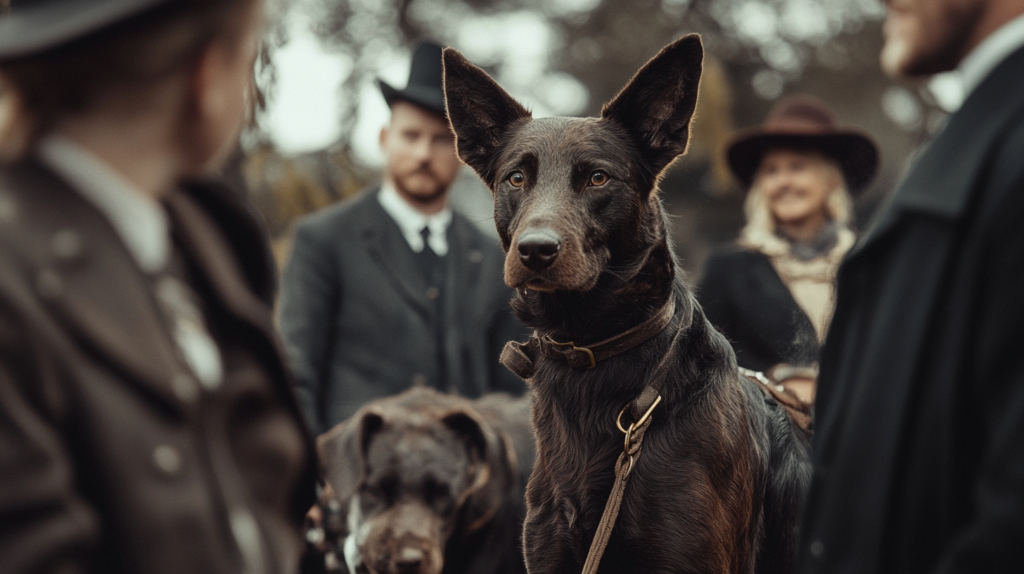
The Future of Australian Kelpies: Balancing Tradition with Modern Roles
The landscape for Australian Kelpies is evolving, reflecting both the rich history of working dogs in Australia and the changing dynamics of dog ownership. Breeders today are at the forefront of this transformation, navigating between traditional working capabilities and contemporary preferences.
Current Trends in Breeding
- Diversity in Purpose: Breeders are increasingly focusing on producing Kelpies that excel in both herding and companionship. This dual-purpose approach caters to a wider audience, from farmers needing reliable working dogs to families seeking loyal pets.
- Performance vs. Appearance: There’s an ongoing discussion about balancing the traits of Working Kelpies, who thrive on their herding prowess, with Show Kelpies, whose conformation and aesthetics are emphasized in competitions.
Global Recognition
Organizations such as The American Kennel Club (AKC) have begun to acknowledge the Australian Kelpie, expanding its reach beyond Australian borders. This recognition opens doors for international breed standards and competitions:
- International Events: Kelpies are making appearances in global dog shows, showcasing their agility and intelligence on a larger stage.
- Breeder Collaboration: Increased communication between Australian breeders and international counterparts promotes knowledge sharing about health practices and breeding techniques.
This intersection of tradition and modernity ensures that while the unique traits of Australian Kelpies are preserved, they also adapt to new roles in society, reinforcing their status as beloved companions across the globe.

Conclusion
Understanding the Australian Kelpie history is essential for appreciating these remarkable dogs. Their evolution from tireless working companions to cherished family pets reflects a rich narrative filled with dedication and adaptability.
Key points to remember:
- The history of the Kelpie showcases their incredible versatility, making them suitable for various roles in today’s society.
- Knowledge of their origins aids in recognizing the traits that make them exceptional herders and loyal companions.
- For those captivated by this breed, consider adopting an Australian Kelpie.
By doing so, you not only support the preservation of this unique breed but also ensure a happy and healthy companion that fits seamlessly into your life. Embrace the spirit of Kelpies, and you’ll discover a world of loyalty, intelligence, and playfulness that makes them truly special.
FAQs (Frequently Asked Questions)
What is the significance of the Australian Kelpie in Australian culture?
The Australian Kelpie is a vital part of Australian culture, recognized for its exceptional herding abilities and versatility as a working dog. Understanding its history helps appreciate its unique traits and contributions to livestock management.
What were the early origins of the Australian Kelpie?
The Australian Kelpie has roots in the Scottish smooth collie, influencing its development. Early landholders played a crucial role in shaping the breed’s working abilities and temperament, leading to the establishment of the Kelpie as a distinct breed.
Who was J.D. Gleeson and why is he important to Kelpie history?
J.D. Gleeson was a prominent figure in Australian dog breeding who recognized the first notable Kelpie, known as King’s Kelpie. His efforts were instrumental in promoting Kelpies as a distinct breed within Australia, solidifying their place in herding practices.
What are the differences between Working and Show Kelpies?
Working Kelpies are primarily bred for herding tasks, while Show Kelpies are developed for conformation events. The influence of Border Collies can be seen in certain traits of modern Show Kelpies, such as coat type and structure.
What insights do recent genomic studies provide about the ancestry of Australian Kelpies?
Recent genomic studies have debunked myths regarding dingoes’ influence on the genetic makeup of Kelpies. These studies offer clearer insights into the true ancestry of the breed, tracing back to its working dog heritage.
How can prospective owners effectively train an Australian Kelpie?
Effective training for an Australian Kelpie involves early socialization and consistent methods tailored to each dog’s needs. Resources like books and online courses can provide valuable guidance for raising well-rounded Kelpies.

